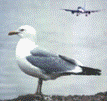Bird Strike Committee Proceedings

Bird Strike Committee-USA/Canada Joint Annual Meeting: 8th (2006)
Date of this Version
August 2006
Document Type
Article
Abstract
To our knowledge, there has been no published analysis of bird strike data specific to helicopters. Our objective was to conduct a comparative analysis of strike reports involving helicopters and fixed-wing aircraft from the Federal Aviation Administration’s Wildlife Strike Database. From 1990-2005, 370 (0.6%) of the 64,734 reported bird strikes to civil aircraft involved helicopters. Of the 370 reported bird strikes involving helicopters, 186 (50%) indicated damage and 67 (18%) indicated substantial damage. In contrast, only 15% of bird strikes with fixed-wing aircraft resulted in damage and 4% resulted in substantial damage. Whereas helicopters accounted for only 0.6% of all bird strikes, helicopters accounted for 13% (2) of the 16 aircraft destroyed and 24% (34) of the 141 injuries caused by bird strikes. For helicopters, 63% of bird strikes and 77% of damaging strikes occurred during the en-route phase of flight compared to only 2% and 7%, respectively, for fixed-wing aircraft. The much higher en-route strike rate for helicopters is related to the lower height at which helicopters typically fly compared to fixed-wing aircraft. For helicopters, about 52% of strikes occurred from 501-2,000 feet AGL compared to 14% for fixed-wing aircraft. This is a height zone frequently used by many bird species, especially gulls, waterfowl, raptors and vultures, the species most commonly struck by helicopters. For helicopters, 97% of strikes causing damage occurred at an indicated airspeed of more than 60 knots. Windshields represented 41% of helicopter components reported as damaged by bird strikes compared to only 6% for fixed-wing aircraft. The disproportionate number of windshields damaged and resulting human injuries indicates that improvements are needed in windshield design and strength for helicopters.

